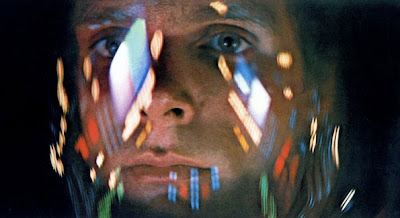Farwell to a Lovely, Soulful Star: Dorothy Malone
Some movie lovers develop a special identification with key performers, to the extent they feel they have a friend onscreen each time said performer shows up in a movie. My attachment to Dorothy Malone was formed in the 1980’s as a classic-movie mad teen bent on gobbling up as many Oscar-winning performances as possible, though even then I knew Oscar didn’t necessarily equate a great film or performance. However, upon seeing Malone for the first time in Written on the Wind I felt the Academy was damn right in this case, and I sensed something else very special- the soulfulness in those beautiful eyes was hard to shake off, and although as nymphomaniac Marylee Hadley Malone was portraying one of the era’s quintessential tramps, only redeemed near the final-fadeout after causing a wealth of problems for anyone in her vicinity, a warmth and likability was evident as well. I was hooked to a possibly unhealthy extent (I own several posters from Malone films, but few from any other stars).
I have never been able to view Malone objectively- I just love the fact she and her distinct presence is there to gaze upon, and that she had the opportunity to eke out a career of some distinction before the good roles dried up. In mentions of her passing on January 19th, the inevitable reference to the “Oscar curse” was brought up. Although it’s true after her win for Wind Malone never partook of a major movie hit again until her small but vivid bit in her final film, Basic Instinct, she did interesting and sometimes arresting work in subsequent films: especially likable in Tip on a Dead Jockey, working hard to bring some dramatic intensity to Man of a Thousand Faces and in her biggest post-Oscar role as the ill-fated Diana Barrymore in Too Much, Too Soon, and truly memorable and moving in her career-best work in The Tarnished Angels, which provides a distinct showcase for Malone's mixture of wounded vulnerability and world-weary bitterness.
Discovered in college in 1943, the eighteen-year-old Malone was signed up first by RKO before moving over to Warner Brothers, where she paid her dues for a few years in bit parts, before finally gaining attention with her justifiably famous few minutes with Bogart in 1946’s The Big Sleep, slyly portraying the foxiest book shop clerk in film history with great humor and skill. Although she displayed a unique type of intellectual sexiness in Sleep, after her success Malone languished as a reliable ingénue in a series of programmers and Westerns for the next decade, before finally breaking through in late 1954-early 1955 via her memorable May-December tryst with Tab Hunter in Battle Cry and in Young at Heart, both of which gave her some opportunities to demonstrate the emotional depth and erotic restlessness which would become central to her work with Douglas Sirk in Wind and Angels. Heart also featured Malone as a blonde, and the new locks did her plenty of favors- always a beauty, as a blonde Malone became distractingly breathtaking onscreen. The major success of Battle Cry helped place Malone third on 1955’s “Stars of Tomorrow” poll, the same year Malone was serenaded by Dean Martin to the memorable strains of "Innamorata" in Artists and Models, one of the best Martin & Lewis efforts thanks to director Frank Tashlin. The upswing continued when Douglas Sirk pegged Malone for her juicy role in Wind, with the unforgettable moment of Malone rumbaing-away upstairs to "Temptation" while her daddy expires up, then downstairs.
After surviving 1960's The Last Voyage, Malone's career reached a nadir with the fun but underwhelming Beach Party before salvation came in 1964 on television's first prime time soap opera, Peyton Place, which set Malone up well for the remainder of the 1960's, bringing her a wider audience than before and providing some financial stability. Although Place focused largely on its cast of young up-and-comers, significantly Ryan O'Neal, Mia Farrow and Barbara Parkins, as Constance MacKenzie, a woman who harbors a secret past (of course), top-billed Malone was allowed the chance to demonstrate some perceptive, intelligent playing. Moving back to Texas to raise her two daughters by actor Jacques Bergerac (the couple were married from 1959-1964), Malone made occasional film and television appearances, turning up in one of television's first big miniseries, Rich Man, Poor Man and touchingly as a sweet, dotty, dog-loving mother in John Huston's 1979 cult classic Winter Kills before making a final brief impression in Instinct as Hazel Dobkins, a widow who widowed herself several decades beforehand.
During the recent Academy Award broadcast, the Academy neglected to include Malone in the "In Memorandum" segment, a move that, to at least one loyal Malone fan, proved to be much more inept than the "Moonlight in La La Land" envelope fiasco of 2017. Fortunately, the fact Malone has a history as an Oscar winner will guarantee curious classic movie fans will continue to seek out her impressive work as this blogger once did, ensuring her legacy as a fine screen performer will endure.








